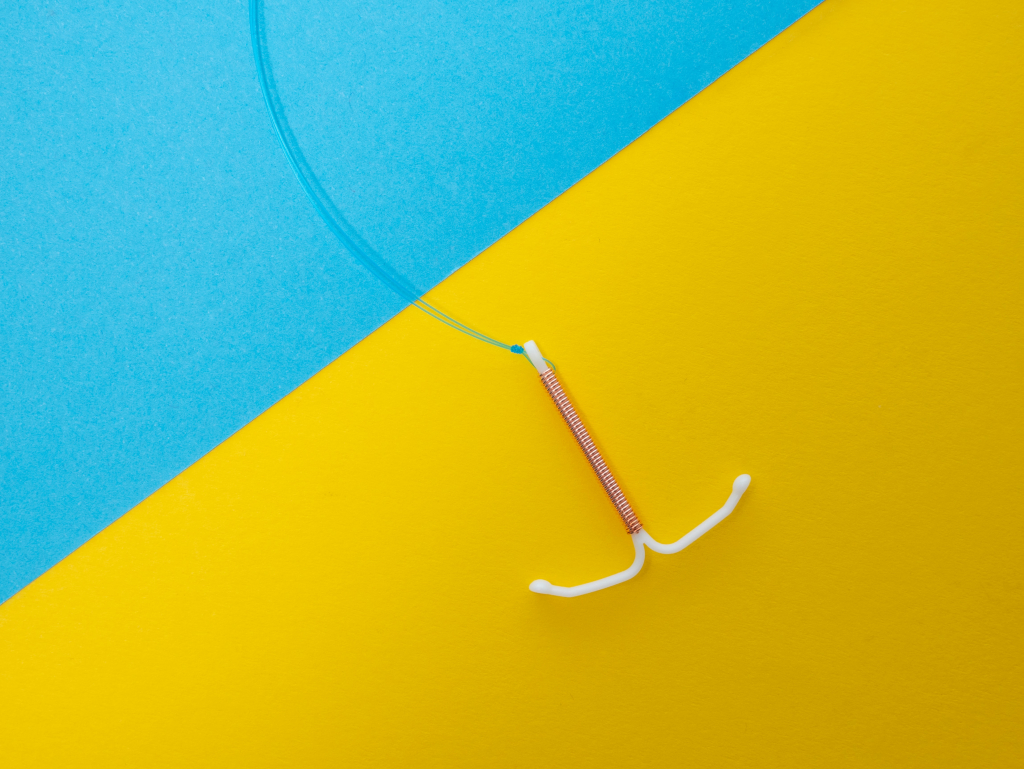
Among the many contraceptive devices in use today, IUD (Intrauterine device) (also known as IUCD- intrauterine contraceptive device) is used by women as a safe, long-term and reversible technique. Pregnancy does not happen as long as the device is in place. IUD removal is easy, and after removal, a pregnancy can occur. The insertion and disposal have to be done by a trained professional.
They are supposedly effective in preventing pregnancy from anywhere between 5-10 years once inserted.
There are two types of IUDs, Hormonal and non-Hormonal, with T-shaped arms inserted into the uterus.
Hormonal IUDs contain:
- A synthetic form of progesterone-progestin.
- Making the mucus thick inside the cervix.
- Preventing the sperms from reaching the egg.
Even if there is a sperm that reaches an egg, progestin impedes the attachment of the egg to the uterus wall by weakening it. Both actions prevent pregnancy.
Non-Hormonal IUDs contain a copper lining or band. Copper ion is toxic for the sperms affecting their movement by causing the sperm tails to fall off the main body. With no sperm reaching the eggs, pregnancy does not happen.
Any birth control method has its positives and negatives, and IUDs are no exception.
Positives of IUD- Boon
- IUDs are 99% more effective in preventing pregnancies than other temporary methods where human error or improper use poses a risk.
- IUDs are a boon for many women having health conditions where pregnancy can be life-threatening.
- Hormonal IUDs can regulate the periods in women.
- Copper IUDs can be used as an emergency birth control method immediately after unprotected intercourse, as they start their action instantaneously.
- IUDs do not affect sexual urge, activity, or intercourse.
- IUDs are appropriate for women unable to use contraceptives containing oestrogen because of various conditions like thromboembolism, arterial diseases, diabetes, or migraine.
- IUDs are safe to be used by women on any medication, and it does not interfere with medications.
- IUDs do not cause any increase in the weight of the women using them.
- Hormonal IUDs can reduce the risk of endometrial or uterine cancer.
- IUDs are safe to use even in lactating women.
Negatives of IUD- Bane
- Copper IUDs may cause heavy periods (menorrhagia) in women with endometriosis. It can also exacerbate dysmenorrhoea or polymenorrhea.
- Women suffering from Wilson’s disease (Excess copper accumulation in the organs) cannot use Copper IUDs.
- IUDs do not protect against STDs or STIs. (Sexually transmitted disease or infections)
- IUD insertion may result in cramps or pain in the uterus and pelvic region.
- IUD insertion can increase the risk of uterine infection in women within 20 days if they are prone to STD/I. It is prudent to check for gonorrhoea or Chlamydia before IUD insertion to eliminate the risk of infection. If ignored can lead to PID (Pelvic inflammatory disease), a severely painful condition.
- Expulsion of the IUD can occur in about 5% of women within three months during periods or immediately after. It is common in nulliparous women. Re- insertion should be carried out by an expert professional.
- There is a risk of ectopic pregnancy if a woman gets pregnant with IUD in place. Though rare, it can lead to complications like miscarriage, preterm labour, and infections. Removal of IUD in pregnancy detection can reduce the risk of these conditions.
- Perforation of the uterus can occur in about 0.1% of women opting for an IUD. If detected, it will require surgical intervention to remove the device.
Contraindications for the use of IUD
IUDs are not advised for women with the medical conditions mentioned below.
- Vaginal bleeding can result because of undetected cancer of the reproductive organs.
- Women with a history of having cancer of reproductive organs.
- Dysmenorrhoea menorrhagia can exacerbate with IUD for women who have a PID account.
- Women with an abnormal uterus.
- Women with a history of bacterial endocarditis and heart disease.
Conclusion
IUDs provide safe, effective, and long-term protection against pregnancy without bothering about the other temporary methods to be adopted during regular sexual activities.
A talk with the gynaecologist and a health check-up wouldn’t go amiss before IUD insertion. It can help provide insight into what kind of IUD would suit the woman, thereby reducing or eliminating the risks during and after the process.
IUDs being a boon or a bane depends on the situation that can vary from person to person. But, it is by far the safest and time-proven method of contraception, provided we follow instructions and understand the negatives.
Be informed; choose wisely.
Reference link: https://www.nhs.uk/conditions/contraception/iud-coil/



